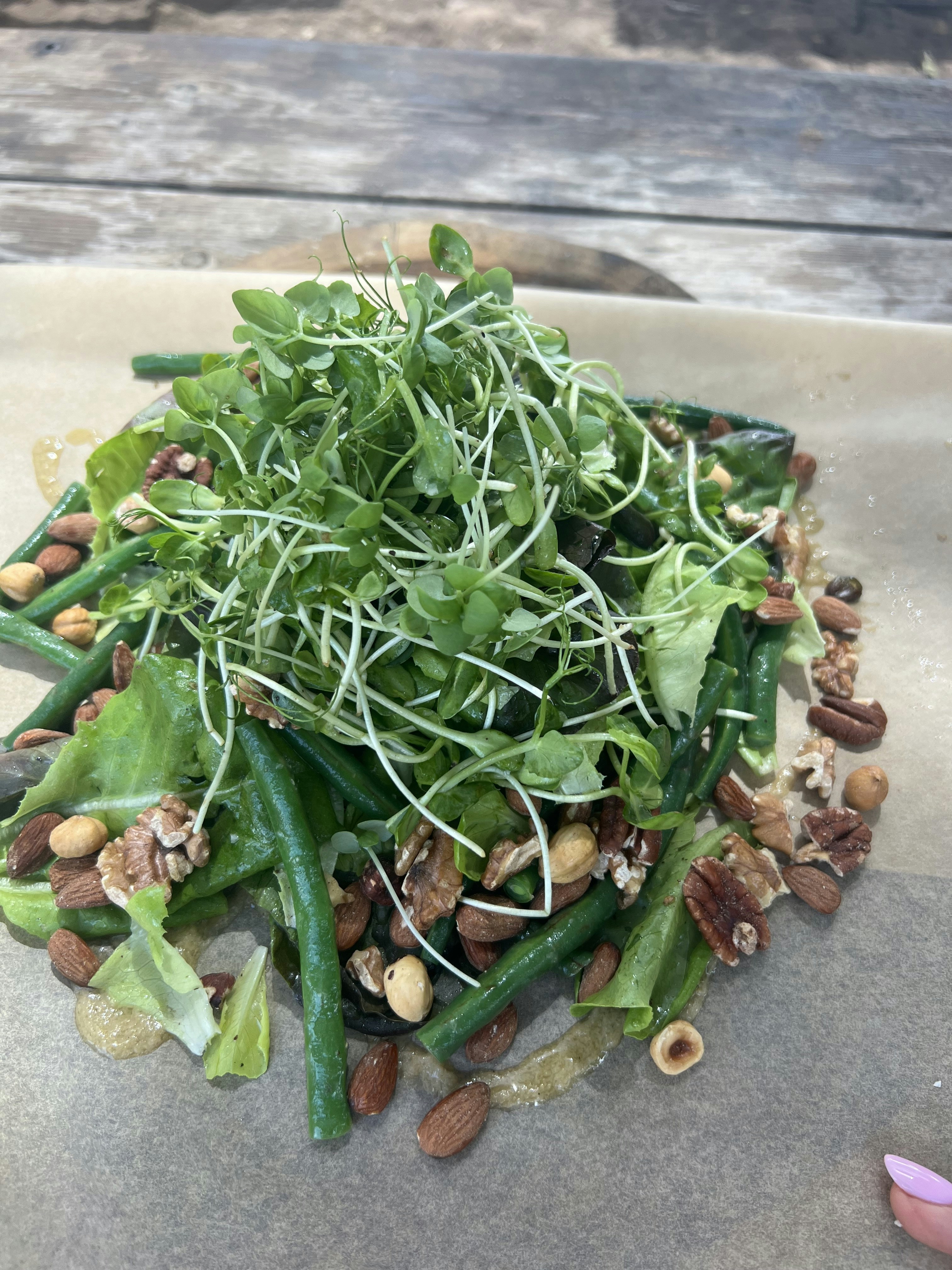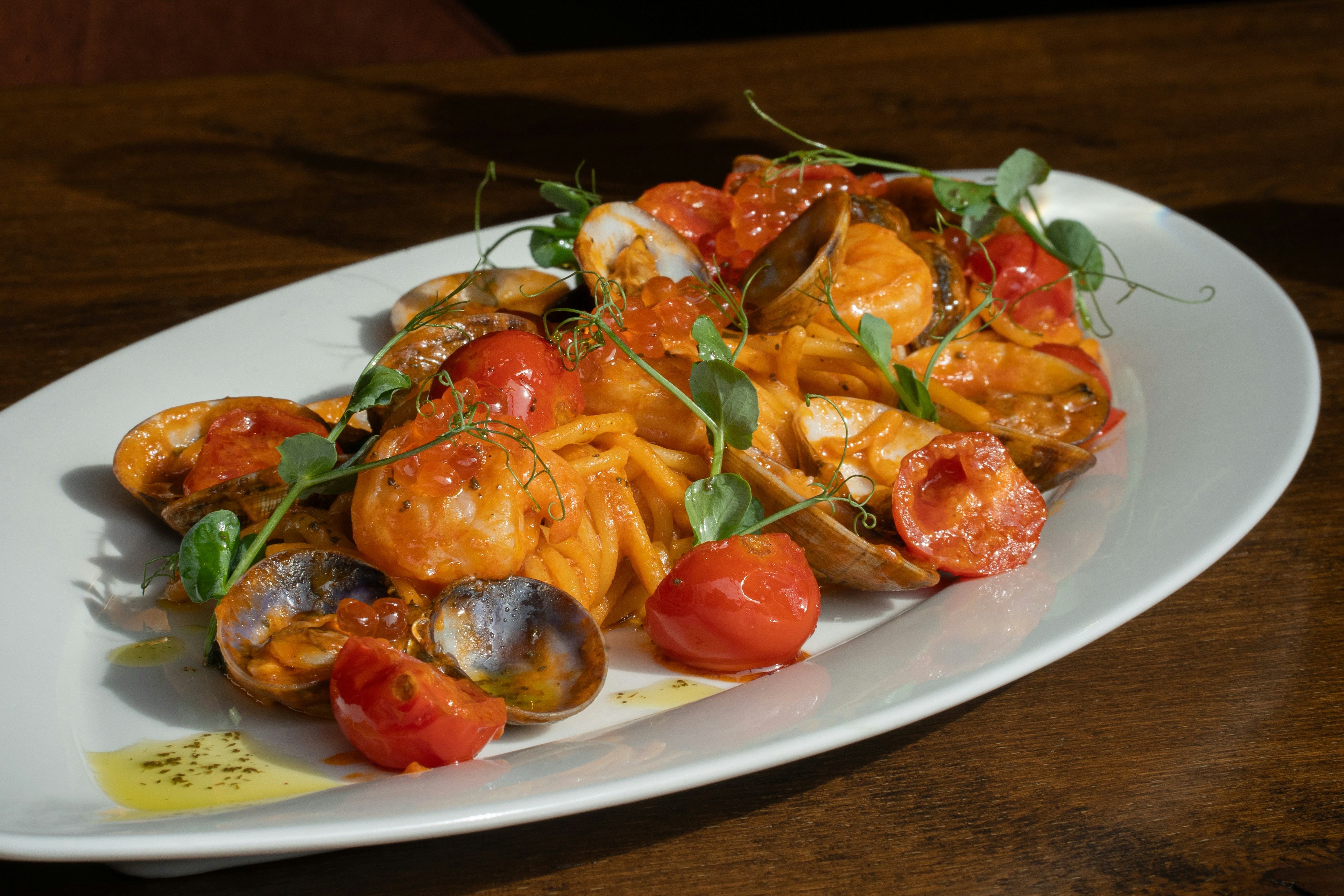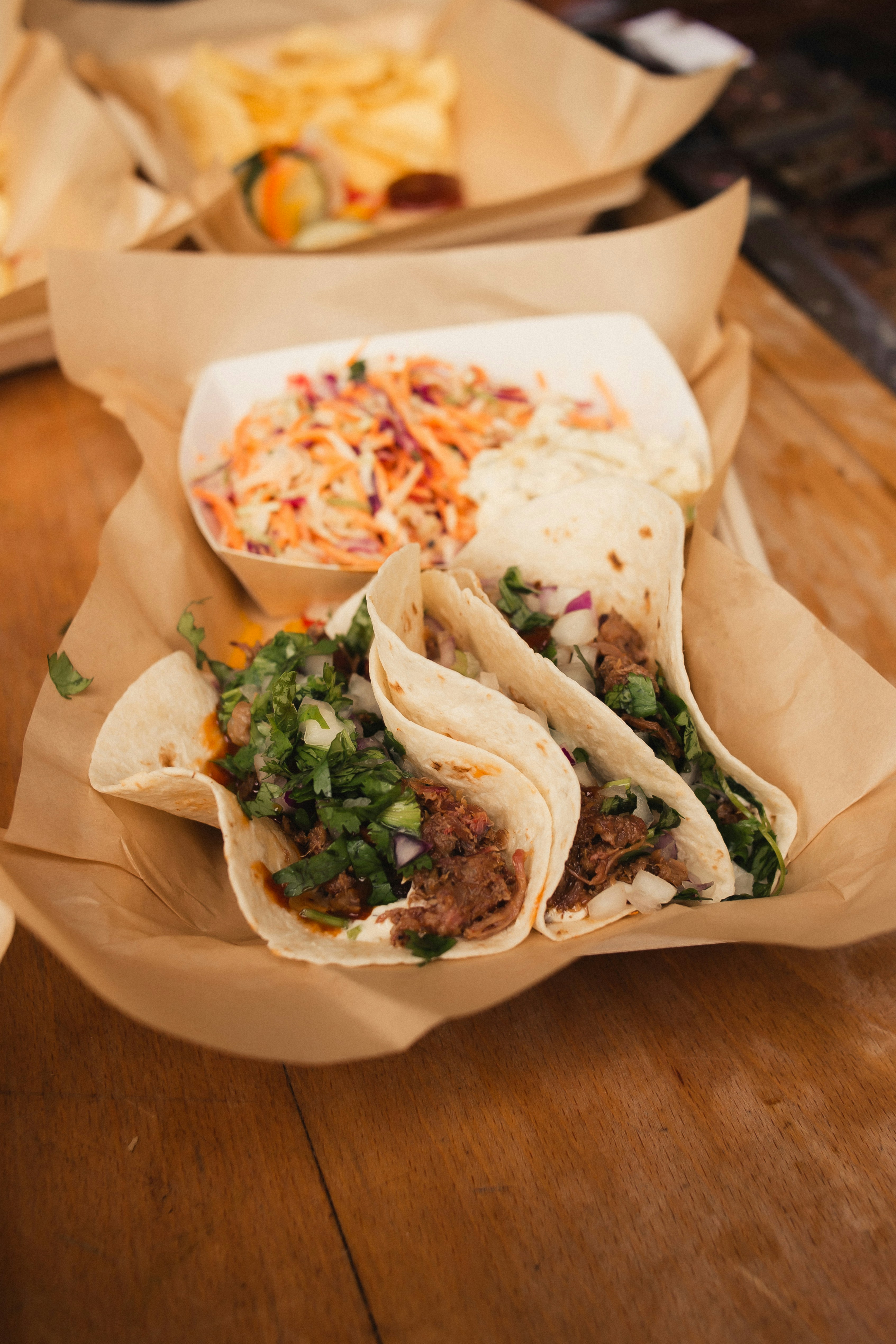
Introduction to Healthy Salads
Healthy salads have emerged as an essential component of a balanced diet, especially for those looking to lose weight. Understanding the importance of these nutrient-rich dishes is vital, as they can aid in both weight management and overall wellness. The concept of a salad often conjures up images of bland, boring veggies; however, this is far from the reality. A well-crafted salad can boast a medley of flavors and textures, transforming it into a gourmet experience rather than just a side dish.
At their core, healthy salads are designed to provide a rich array of nutrients, vitamins, and minerals while remaining low in calories. They can incorporate a variety of ingredients such as leafy greens, colorful vegetables, lean proteins, and wholesome grains. This diversity not only enhances nutritional value but also stimulates the palate. The balance between nutrition and flavor is a pivotal aspect of creating satisfying salads that contribute to weight loss. Moreover, salads can be easily customized to suit individual tastes, making them an accessible choice for everyone.
One common misconception is that salads must be devoid of taste and culinary creativity, which is simply untrue. By incorporating a spectrum of toppings like nuts, seeds, fruits, and flavorful dressings, one can elevate a salad from mundane to extraordinary. These additions not only enhance its taste but also provide essential fats, which help promote satiety—a crucial factor for those who are trying to control their weight. As we delve deeper into the myriad healthy salad recipes, it becomes clear that with the right ingredients and thoughtful preparation, these dishes can be both appealing and nourishing.
Key Ingredients for Healthy Salads
Creating a nutritious salad that contributes to weight loss involves a careful selection of ingredients. The foundation of any healthy salad is leafy greens, which provide essential vitamins and minerals while being low in calories. Varieties such as kale, spinach, arugula, and romaine are excellent choices, offering a range of flavors and textures. These greens are not only low in energy density, but they also serve as a vibrant base for the other components of the salad.
In addition to leafy greens, incorporating colorful vegetables is crucial. Vegetables like bell peppers, cherry tomatoes, cucumbers, carrots, and radishes add crunch, flavor, and a wealth of nutrients. Each color represents different phytonutrients and antioxidants, contributing to overall health and aiding in weight management. Moreover, adding a variety of textures can make salads more appealing; consider tossing in some roasted veggies or crunchy nuts to enhance the eating experience.
Protein sources are another essential component of healthy salads as they increase satiety, helping to keep hunger at bay. Options such as grilled chicken, chickpeas, beans, or boiled eggs not only provide necessary protein but also contribute unique flavors. Incorporating these proteins fosters a balanced meal, making it satisfying and nutrient-rich.
Healthy fats, such as avocados, seeds, and olive oil, are integral for flavor enhancement and nutrient absorption. These fats can promote a sense of fullness and are vital for overall health. It is important to strike a balance, using them judiciously to avoid excessive calorie intake while still enjoying the benefits they offer.
Encouraging experimentation in creating salads is fundamental. Mixing different ingredients, flavors, and textures can lead to unique and delicious meals. By thinking outside of traditional combinations, you can create a personalized salad that is both visually appealing and satisfying, making it easier to integrate such dishes into a healthy weight loss plan.
Flavorful Dressings: The Secret to Delicious Salads
Dressings play a pivotal role in elevating a salad from an uninspiring mix of vegetables to a vibrant, flavorful dish. They act as the finishing touch that unifies the various ingredients, enhancing their individual flavors and textures. A well-crafted dressing can transform even the simplest salad into a delightful culinary experience, proving that the right combination of ingredients can significantly impact taste, nutritional value, and overall satisfaction. In the quest for weight loss, choosing healthy dressings becomes essential, ensuring that calorie counts remain low while taste remains high.
When selecting or preparing salad dressings, it is vital to incorporate natural ingredients that contribute not only flavor but also health benefits. Fresh herbs are an excellent choice; their vibrant aromas and flavors can invigorate any salad. Ingredients such as basil, cilantro, and dill can be blended into vinaigrettes or used as garnishes, providing a burst of freshness without unnecessary calories. Citrus juices—like lemon, lime, or orange—are also effective for adding zesty flavor while contributing vitamins and antioxidants.
Nuts and seeds can be another fantastic addition to salad dressings. They offer a creamy texture and a satisfying crunch, all while providing healthy fats and protein. For example, blending tahini or almond butter into a dressing can create a rich, flavorful experience without relying on unhealthy oils or excessive amounts of sugar. Moreover, combining these ingredients can lead to a dressing that not only tastes good but also supports various dietary goals.
Ultimately, the secret to delicious salads lies in crafting dressings that emphasize fresh, wholesome ingredients. By focusing on herbs, citrus, and healthy fats from nuts, salads can remain both nourishing and pleasantly satisfying, aligning perfectly with one’s weight loss journey.
Top Healthy Salad Recipes for Weight Loss
When embarking on a weight loss journey, salads can be a powerhouse of nutrition while remaining low in calories. Here are several healthy salad recipes designed to smash your cravings and keep you on track.
Quinoa and Black Bean Salad: This protein-packed salad begins with a base of cooked quinoa, mixed with black beans, diced bell peppers, and red onion. These key ingredients are rich in fiber and essential amino acids, promoting satiety. Toss with lime juice and cilantro for a refreshing zing, enhancing both taste and nutrient density.
Kale and Chickpea Salad: Kale is renowned for its superfood status, being loaded with vitamins A, C, and K. Combine it with roasted chickpeas, which provide protein and fiber, and add cherry tomatoes and cucumbers for crunch. A dressing made of tahini and lemon juice not only brings depth of flavor but also healthy fats that support overall wellness.
Greek Yogurt and Spinach Salad: Exchange traditional dressing with a creamy blend of Greek yogurt mixed with garlic, lemon juice, and dill. This salad features fresh spinach, which is low in calories and high in iron, alongside diced cucumbers and radishes for a refreshing touch. The yogurt adds protein and probiotics, aiding digestion and weight management.
Mediterranean Farro Salad: A delightful grain-based salad, farro serves as a great source of fiber. Mix it with diced tomatoes, olives, cucumber, and feta cheese for added flavor and quality nutrients. Drizzle with olive oil and balsamic vinegar to elevate its taste and contribute heart-healthy fats that can promote lasting energy without excessive calories.
These options not only keep your meals interesting but also ensure you are packing in the essential nutrients while managing calorie intake effectively. The combination of fiber, protein, and an array of vitamins makes these salads not just healthy but deliciously satisfying.
Vegan Salad Options for All Tastes
Vegan salads offer a vibrant array of flavors and textures that cater to diverse palates, making them an excellent addition to any diet, especially for those pursuing weight loss. With the incorporation of various plant-based proteins and healthy fats, these dishes not only provide essential nutrients but also ensure that meals are hearty and satisfying. Among the most popular options is a quinoa and black bean salad, which combines the protein-packed nature of quinoa with the fiber-rich qualities of black beans. Tossing in bell peppers, corn, and a zesty lime dressing elevates the freshness and taste, making it a fulfilling dish.
Another delightful choice is the chickpea salad, often enriched with diced cucumbers, tomatoes, and red onion. The chickpeas contribute a good source of protein, while the fresh produce adds a satisfying crunch. To enhance the flavor profile, a sprinkle of fresh herbs such as parsley or cilantro can be included, along with a drizzle of olive oil and lemon juice for extra zest. This salad proves that eating healthily can be both tasty and enjoyable.
For those looking to explore further, a roasted vegetable salad combines an assortment of seasonal vegetables such as zucchini, bell peppers, and carrots, marinated and roasted to bring out their natural sweetness. Topped with an avocado dressing, this salad not only incorporates healthy fats but also adds a creamy texture that many salads lack. The use of nuts or seeds, like walnuts or pumpkin seeds, can further enhance both flavor and nutrient density by providing additional protein and healthy omega-3 fatty acids.
Ultimately, vegan salads can satisfy a variety of tastes, appealing to both vegans and non-vegans alike. The versatile combinations of ingredients ensure that every meal remains interesting and nutritious, making it easier to stick to a healthy eating regimen.
Making Salads a Meal: Adding Protein and Grains
To transform a simple salad into a nourishing meal, incorporating protein sources and grains is essential. Doing so not only enhances the flavor but also significantly boosts the nutritional profile of the dish. When considering protein options, legumes, such as chickpeas, black beans, or lentils, serve as excellent choices. These ingredients not only provide a hearty texture but also contribute fiber and essential nutrients, which are beneficial for weight loss. Fiber aids in digestion and promotes a feeling of fullness, making it easier to manage portion sizes and reduce overall caloric intake.
Tofu is another versatile protein option that can be easily integrated into salads. Rich in protein and low in calories, tofu absorbs flavors well and can be grilled, sautéed, or cubed into salads. Its ability to aid in muscle recovery and weight management makes it a valuable addition for individuals aiming to lose weight while maintaining energy levels. For those who prefer animal-based proteins, grilled chicken or boiled eggs can also be included, offering a satisfying variation for different dietary preferences.
Including whole grains in your salad also contributes to making it a complete meal. Quinoa, farro, or brown rice not only provide substances that are satisfying but are also packed with nutrients. Whole grains offer complex carbohydrates, essential for sustained energy, and can help in stabilizing blood sugar levels. These factors are crucial for effective weight management and can prevent the mid-afternoon energy slump that leads to unhealthy snacking.
In conclusion, by thoughtfully adding protein sources like legumes and tofu, along with wholesome grains, salads can be transformed into filling and nutritious meals. This approach promotes satiety while ensuring that essential nutrient levels are met, supporting weight loss goals and overall well-being.
Seasonal Ingredients for Fresh Salads
Utilizing seasonal ingredients in salads not only ensures maximum freshness but also enhances the overall flavor profile. When fruits and vegetables are in season, they are usually at their peak of ripeness, nutritional value, and taste. This contributes significantly to the enjoyment of the salad as well as to a healthier diet. Seasonal produce is often more affordable and environmentally sustainable, making it a smart choice for conscientious eaters.
To select seasonal ingredients for your salad, start by researching what is available in your local area during different times of the year. Farmers’ markets are an excellent source of fresh produce and can provide insight into seasonal offerings. Additionally, you can consult local produce guides or online resources, which often list seasonal vegetables and fruits relevant to your region.
Incorporating seasonal ingredients can be straightforward and fun. For example, during the spring months, consider adding tender greens like arugula or spinach, along with seasonal vegetables such as radishes and asparagus. Summer brings an abundance of colorful bell peppers, tomatoes, and cucumbers, which can elevate any salad. Fall introduces hearty ingredients such as roasted squash and apples, while winter can offer robust greens like kale and collards. Adjusting your salad recipes according to these seasons keeps the meals exciting and helps avoid monotony.
Furthermore, feel free to experiment by mixing different textures and flavors. You might blend crispy seasonal veggies with creamy dressings to create a delightful contrast. Also, try adding grains or legumes that pair well with seasonal produce, offering both health benefits and a satisfying bite. Staying attuned to the seasons will not only nourish your body but also inspire creativity in the kitchen.
Meal Prep and Storage Tips for Healthy Salads
Preparing healthy salads in advance can streamline your meal routine, making it easier to enjoy nutritious options throughout the week. The key to effective meal prep lies in selecting the right ingredients and employing proper storage techniques to maintain freshness. When preparing salad components, it is crucial to store ingredients individually rather than combining them all at once. This practice not only enhances shelf life but also preserves the crispness of vegetables and greens, ensuring optimal texture.
Begin by washing and chopping vegetables, such as cucumbers, bell peppers, and carrots. It is advisable to dry them thoroughly using a salad spinner or clean kitchen towels to remove excess moisture. Store these elements in airtight containers, ideally glass, to prevent them from wilting or spoiling. Green leafy vegetables, like spinach or kale, can be separated in a separate container with a damp paper towel to help maintain their freshness without getting soggy.
Moreover, fruits like berries or apple slices should be treated with care. Depending on the fruit type, consider storing them in specialized containers designed to minimize exposure to air. Acidic fruits, such as citrus, can be a great addition but should be added just before serving to avoid prematurely softening other ingredients.
One of the most critical aspects of preparing salads is managing the dressing. To retain the flavors and textures of your salad, always keep the dressing separate until serving. Use small, portable containers for individual servings of dressing to facilitate easy distribution when you are ready to eat. This method not only prevents the salad from becoming soggy but also allows for customization of flavor according to personal preference.
By following these practical meal prep and storage tips, you can ensure that your healthy salads are convenient, fresh, and ready to enjoy, supporting your weight loss goals. Planning ahead empowers you to make better dietary choices while saving time on busy days.
Conclusion: Embracing Healthy Salads in Your Lifestyle
Incorporating healthy salads into your daily meals is not merely a trend, but a sustainable lifestyle choice that can significantly benefit your weight loss journey and overall well-being. Salads are uniquely versatile; they offer a plethora of ingredients from various food groups which can create a balanced meal. By choosing a mix of leafy greens, colorful vegetables, whole grains, and a protein source, you can craft a satisfying dish that not only appeals to your taste buds but also aligns with your nutritional needs. The goal is to make healthy salads a staple in your diet, not as a punishment, but as a delicious and enjoyable option.
The long-term benefits of integrating salads into your routine can be profound. High in vitamins, minerals, and antioxidants, they support your body’s health while encouraging weight management through their low-calorie and nutrient-dense profile. The fiber from vegetables can aid digestion and help maintain a feeling of fullness, reducing the likelihood of overeating. Furthermore, by experimenting with different ingredients and dressings, you can find combinations that excite your palate, thus ensuring that eating healthily does not become a monotonous endeavor.
We encourage you to be creative with your salad recipes. Explore various themes, such as Mediterranean, Asian, or even seasonal flavors to keep your meals engaging. Incorporating herbs, seeds, or nuts can add texture and flavor while boosting nutritional content. Remember that healthy eating does not have to lack enjoyment; it can be a delightful experience that nurtures both your body and your senses. Embrace this lifestyle and relish in the journey of discovering what nutritious salads can bring to your life.





Add comment